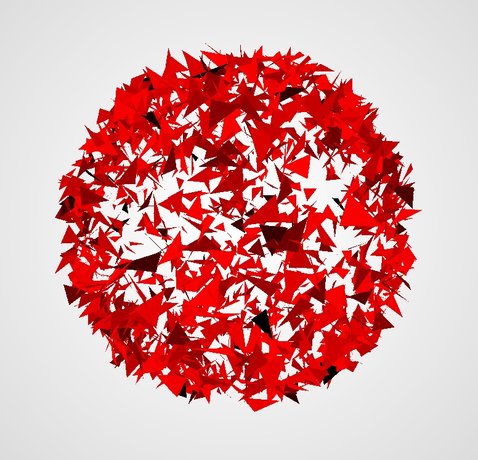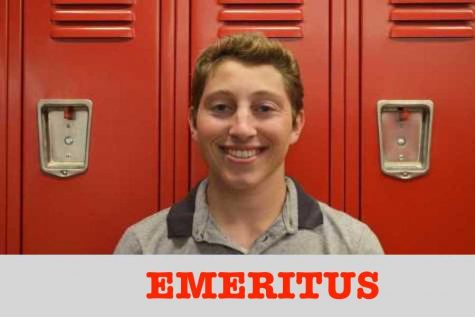Computer art goes beyond four-cornered paper
March 6, 2014
“All art is technological,” explains science teacher Dr. Jay Smallwood.
Each period of art history, he explained, is influenced by the innovations discovered at that time. For instance, tempera paints were replaced by oil-based paints, literally changing the landscape of art.
The computer is no exception. Today, most photography is touched up using computer programs, and posters, brochures, architecture and sculptures are initially designed on the computer. Visual artists – painters of the computer age – have joined the trend.
Unlike traditional art, computer art is not limited by the four corners of a canvas. Offering endless possibilities, computer art can tell a story or evoke an image or feeling, and integrate one or more senses.
It can be viewed in the smaller format of the laptop screen, projected onto a wall in a large format or experienced in an art gallery installation. It can appear to rotate in three dimensions, and it can be shaped in real time by a viewer moving in the room.
“Mind blowing,” said Dr. Smallwood, who specializes in interactive installations, an art form that engages the spectator in the artistic process.
Computer art can be difficult to define because it takes many forms. But both students and teachers at Shalhevet are engaging in this new art form.
Senior David Ohana taught himself how to use Photoshop, the popular software application that allows people to create and edit or adjust images, through computer art tutorials on YouTube. He enjoys manipulating photos and was the first to hold the position of technology designer on The Boiling Point.
“It was difficult at the beginning,” said David, who began to learn last summer. But eventually he got to know the program well.
Recently, David designed a “Seal of Approval” for Shalhevet’s Fairness Committee. Layering and merging multiple images he gathered from the internet, he created an elaborate portrait of a Firehawk wearing a powdered wig – like an English judge – superimposed on a background of blazing fire.
Though it’s just a hobby now, David said that if he is able to make money through computer art, then maybe one day he will make it his profession.
Sophomore Gabe Silverstein, another computer art enthusiast, said it “takes a lot of time to master,” but that students can improve with practice and dedication.
Gabe used Photoshop tools to create a two-dimensional “story board” pinned with images of personal relevance. The focal point is a blue and green earth identifying his parents’ Ukrainian heritage, their respective hometowns, meeting place and current residence. Retro representations of Gabe are in the lower right corner, and a large pencil on the left signifies his love of drawing and creation — explaining that “All great artwork begins with a pencil.”
Over the past few years, chemistry teacher Dr. Smallwood, who painted and studied art history while in college, became intrigued by the diverse artistic pathways offered by computer art. He prefers to call it “technological art,” and believes the arts and sciences should be more closely related.
Now he mixes traditional media with modern technology, for example projecting various images onto large screens or surfaces which change as sensors are activated by the viewer.
“The idea is like using principles of physics, but instead of worrying about data or trying to study something, you’re more interested in how they visually interact,” said Dr. Smallwood. “And then you can map it onto architectural spaces.”
You don’t have to be a professional coder, he added. Anyone can learn, as he did. Dr. Smallwood is currently working on multiple projects, and devotes 30 to 40 hours per month to his computer art projects. Several of Dr. Smallwood’s art pieces have been shown in galleries, and recently he started incorporating digital imagery with “encaustic” art, an art form that uses pigmented molten beeswax.
Dr. Smallwood said not many people collect computer art, mainly because most pieces are temporary. Others, like Denis Perevalov’s Triangles Cloud, can be viewed on any computer screen. Very few fine art museums collect computer art, and even some of the best installations barely sell for six figures.
There are also some who don’t really like computer art. Shalhevet Art teacher Roen Salem is one, though she acknowledged that it is “the way of the future.” While she enjoys using a variety of techniques and tools, including recyclables, to create art, she remains a traditionalist.
“If I can’t smell the turpentine, then I don’t like it,” Ms. Salem said.
But last year’s Rain Room installation at the Museum of Modern Art in New York showed how it could be popular. The exhibit consisted of an area of falling water that used cameras to trace a person’s movement, providing the visitor with the sensation of walking through droplets of rain without actually getting wet.
Designed by the art collective Random International, Rain Room immersed the viewer in an extraordinary virtual experience, which evoked the smells, sights, and sounds of rain.
But the artists mostly create their art for sheer enjoyment. Gabe Silverstein said he derives a sense of satisfaction from the creative process, and an appreciation of his own artistic journey over time.
“Art expresses the person,” said Gabe.
That may be why Dr. Smallwood would not show students any samples of his work.
Computer art is “not just about being pretty — it means something,” he said.
In spite of many requests, Dr. Smallwood declined to share his artwork with The Boiling Point, saying, “And that’s where we’ll stop.”














